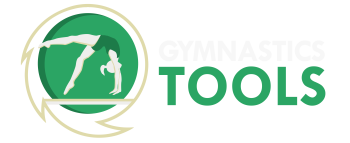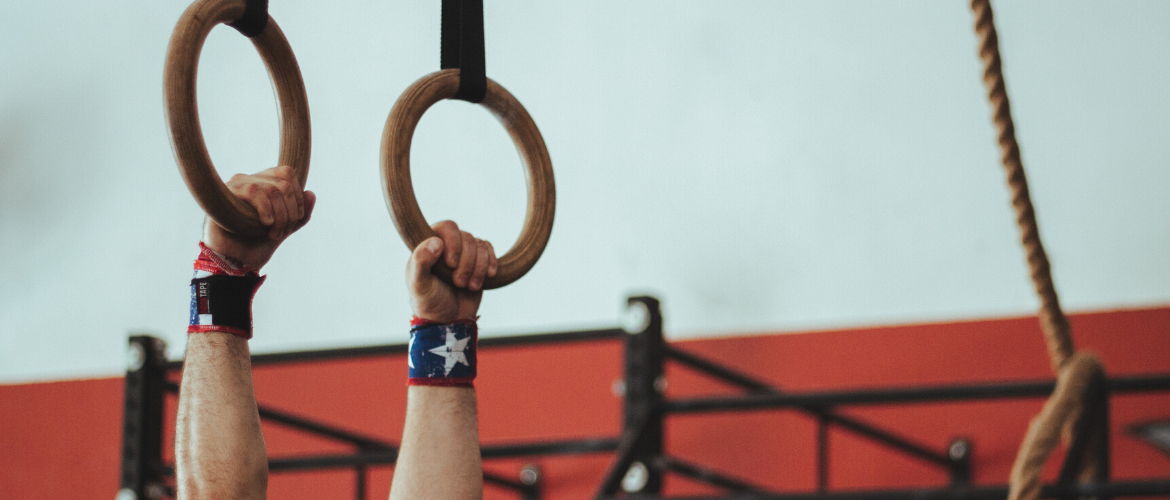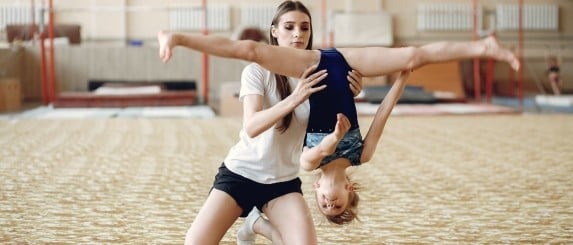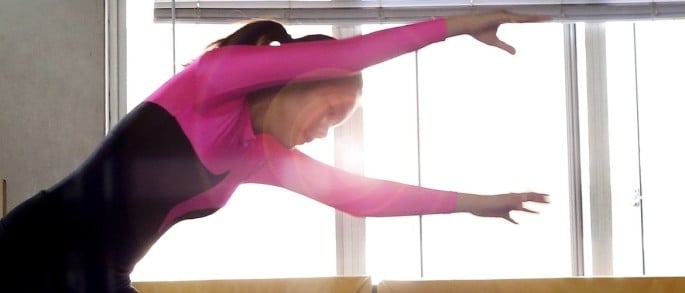Implicit learning is one of the methods that can be used to teach gymnasts a certain skill. Using this method, you don’t give instructions on the execution of the movement like “open your hips to create more length in your layout”. Instead, you use metaphors or create situations that force the desired action. This way, gymnasts learn the movement unintentionally. According to literature, this way of teaching is more effective than the explicit method.
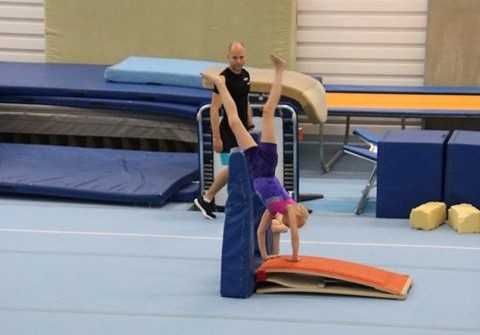
Implicit learning in gymnastics
We will go through some implicit learning methods while looking at some case studies.
Case study 1 implicit learning
Bianca finds it difficult to make her cartwheel vertically straight. Her legs go a bit sideways which often causes her to end with a big wobble. In her cartwheel, you can see her hips staying in a small angle instead of her hips opening.
How can we use the implicit learning method to fix this?
- Tilt your pelvic forward by imagining you have a tail that you want to swing forward
- Try to make yourself as tall as possible by reaching your feet to the ceiling
- Do the cartwheel between two mats that are held upright so you are forced to go through the vertical
- Do your cartwheel with your belly facing an upright mat so you are forced to open your hips.
Instead of focusing on intentionally tilting the pelvic forward in a cartwheel, an explicit learning method, metaphors are used to open the hips. The mat situations force Bianca to make her cartwheel through the vertical.
Case study 2: implicit learning
Matt finds it difficult to push off the vaulting table when doing a front handspring. When doing a front handspring he pushes off the vaulting table by bending and straightening his elbows. This way, he cannot create a good post-flight phase.
Which implicit learning method can help solve this problem?
- Learn to block your shoulders by imagining that there are two sticks in your arms. Practice at a wall first: there’s a fire under your upper body that you want to push yourself away from.
Another example is to push away your elbows/hands from your body:
- The movement of pushing off the vaulting table through your shoulders quickly can also be strengthened by imagining that you push yourself off lava. You want to get away from the lava as quickly as possible with sticks in your arms!
The explicit method is used when you intentionally “block your shoulders” by focusing on straightening your elbows. Using the implicit method, the gymnast is forced to work with its shoulders.
Case study 3: implicit learning
Mandy finds it difficult to keep her legs together in the back handspring. Her knees and ankles are always slightly spread in the flight phase.
What way is the best way to fix this using the implicit learning method?
- Stick your knees and ankles together as if they are glued to one another; squeeze a coin between your knees and ankles that you cannot lose because otherwise you aren’t able to buy ice-cream.
- You can make the situation more forced by having Mandy do the back handspring with an object between her knees / ankles like socks or a wrist sweatband.
The explicit method is the instruction “keeping your knees and ankles together”, but when using metaphors and / or focusing on something else this happens unintentionally.
The abovementioned case studies are only a few examples of implicit learning methods. Are you interested and want to learn more about this? Look at our Gymnastics Tools Platform.
Implicit exercises
Watch more videos at our Youtube Channel
